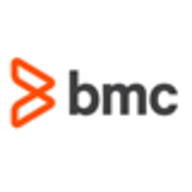

IBM Resource Access Control Facility RACF and BMC AMI Security compete in the security and risk management category for mainframe systems. BMC AMI Security has an edge with its advanced features tailored to current security demands, while IBM RACF is valued for its reliable integration in IBM environments.
Features: IBM RACF offers comprehensive access control, secure protocol integration, and robustness within IBM systems. BMC AMI Security's advanced threat detection, real-time monitoring, and a modern feature set meet current security demands effectively.
Ease of Deployment and Customer Service: IBM RACF simplifies deployment within IBM environments and has knowledgeable customer service for mainframe systems. BMC AMI Security highlights rapid integration with streamlined deployment options, supported by efficient customer service dedicated to security solutions.
Pricing and ROI: IBM RACF is cost-effective for existing IBM users with a stable ROI due to integration. BMC AMI Security involves a higher initial investment but offers substantial ROI through its advanced security features, appealing to organizations seeking cutting-edge security solutions.
| Product | Market Share (%) |
|---|---|
| IBM Resource Access Control Facility | 15.9% |
| BMC AMI Security | 7.4% |
| Other | 76.7% |
BMC AMI Security provides advanced mainframe security solutions tailored to meet the demands of modern security challenges, ensuring robust protection for vital data and IT infrastructure.
This sophisticated system serves as a critical tool for safeguarding mainframes by delivering comprehensive security controls and real-time threat detection capabilities. It assists in maintaining compliance with industry standards, and its proactive threat management is essential for organizations seeking to protect sensitive data efficiently.
What are the key features of BMC AMI Security?BMC AMI Security is widely implemented across industries such as finance, healthcare, and government where data sensitivity and regulatory compliance are paramount. These sectors benefit from robust features designed to maintain the integrity and confidentiality of critical information, while seamlessly integrating with existing infrastructures to enhance overall security management.
In 1976, IBM set the standard for security products when RACF was introduced!
From the beginning, the RACF Development Team has proudly brought you RACF, the premier product for securing your most valuable corporate data. Working closely with your operating system's existing features, IBM's award-winning Resource Access Control Facility (RACF) licensed program provides improved security for an installation's data. RACF protects your vital system resources and controls what users can do on the operating system.
You decide which resources you want to protect and which users need access to them. RACF provides the functions that let you:
Resource Access Control Facility offers the following features:
Access Control: RACF allows administrators to define access controls for various system resources, including datasets, programs, transactions, and system commands. It enables granular control over who can access specific resources and what actions they can perform.
User Authentication: The solution supports multiple authentication methods, such as passwords, digital certificates, smart cards, and biometrics. It ensures that only authorized users with valid credentials can access the system.
Authorization: Users are provided with fine-grained authorization capabilities, allowing administrators to assign and manage permissions for individual users or groups. It enables the definition of resource-level and data-level access controls based on user roles and responsibilities.
Auditing and Logging: RACF generates detailed audit logs that capture security events, including successful and failed access attempts, resource modifications, and policy violations. These logs are essential for compliance auditing, security analysis, and incident investigation.
Secure Password Management: The product includes features for enforcing password policies, such as minimum length, complexity requirements, and password expiration. It supports password encryption and hashing to protect sensitive credentials.
Encryption and Data Protection: The solution provides encryption capabilities to protect sensitive data stored on mainframe systems. It supports encryption algorithms and cryptographic protocols for safeguarding data confidentiality and integrity.
Integration with External Authentication Systems: Users can integrate it with external authentication systems, such as Lightweight Directory Access Protocol (LDAP) or Active Directory, allowing them to leverage existing directories for authentication purposes.
Resource Monitoring and Control: It enables real-time monitoring and control of resource accesses, as well as providing alerts and notifications for suspicious activities, allowing administrators to respond promptly to potential security threats.
Compliance and Regulatory Support: RACF helps organizations meet regulatory compliance requirements by providing the necessary controls, audit trails, and reporting capabilities. It supports compliance frameworks such as Payment Card Industry Data Security Standard (PCI DSS) and General Data Protection Regulation (GDPR).
Administration and Management: The solution offers a comprehensive set of administration and management tools for configuring, maintaining, and monitoring the security environment. It provides utilities for managing user accounts, defining security policies, and performing system-wide security administration tasks.
Some of the benefits that IBM RACF can offer its users are:
Enhanced security
Access control management
Authorization and authentication capabilities
Centralized control over resource access
Fine-grained access control policies
Audit trail and monitoring features
Compliance with regulatory requirements
Protection against unauthorized access
Segregation of duties
Efficient resource allocation and utilization
We monitor all Mainframe Security reviews to prevent fraudulent reviews and keep review quality high. We do not post reviews by company employees or direct competitors. We validate each review for authenticity via cross-reference with LinkedIn, and personal follow-up with the reviewer when necessary.